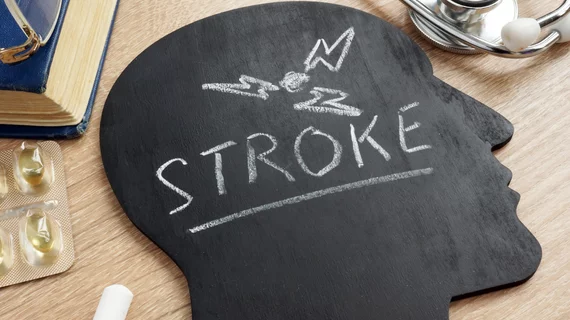Portable MRI helps radiologists spot life-threatening brain bleeding in stroke patients
Portable MR imaging can help radiologists quickly determine if stroke patients are suffering from life-threatening brain bleeding, according to research published Wednesday.
When it comes to stroke care, time is of the essence. Physicians must decide to treat patients with blood thinners or surgery, if the situation involves intracranial hemorrhages.
Furthermore, the American Heart Association recommends all stroke patients undergo rapid brain imaging before performing thrombolytic treatments, but sophisticated scans aren’t always readily available.
The “world’s first” portable MRI system from Hyperfine proved it could help neuroradiologists in these emergency situations, experts reported Aug. 25 in Nature Communications. Using the 0.064-tesla bedside machine, rads correctly spotted 80% of intracerebral hemorrhages, classifying them with an overall accuracy of 90.3%.
“There is no question this device can help save lives in resource-limited settings, such as rural hospitals or developing countries,” corresponding author Kevin Sheth, MD, professor of neurology and neurosurgery at Yale School of Medicine, said Wednesday. “There is also now a path to see how it can help in modern settings.”
Sheth and co-investigators collaborated with Massachusetts General Hospital to compare the results of 144 portable MRI scans to findings from traditional brain imaging. The latter included noncontrast CTs or 1.5T/3T MRI exams performed at Yale New Haven Hospital between July 2018 and November 2020.
Two board-certified neurorads read the exams, which included 56 intracranial hemorrhages, 48 with acute ischemic stroke and 40 healthy controls. The pair accurately spotted hemorrhages or ruled them out in 130 cases.
For intracerebral hemorrhages, the group diagnosed 45, good for an 80.4% sensitivity rate. Blood-negative patients were identified in 85 of 88 situations, reaching 96.6% specificity.
Finally, scans performed via portable MRI took 30 minutes compared to 67 using traditional MR machines.
“Overall, we report a systematic assessment of ICH using a portable MRI device that can be integrated into the clinical workflow to provide timely diagnostic neuroimaging at the bedside,” the authors concluded. “Further study is required in prospective multicenter studies.”
Note: the study was funded by Hyperfine, the American Heart Association and the National Institutes of Health.

